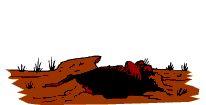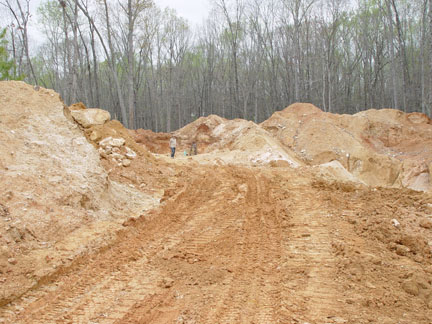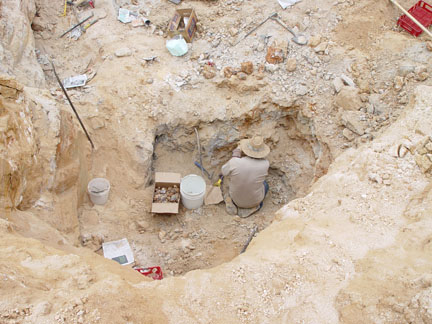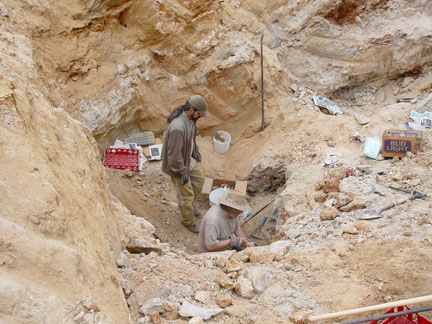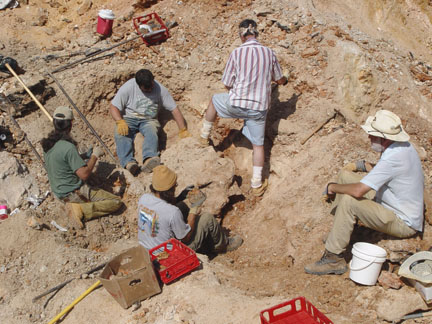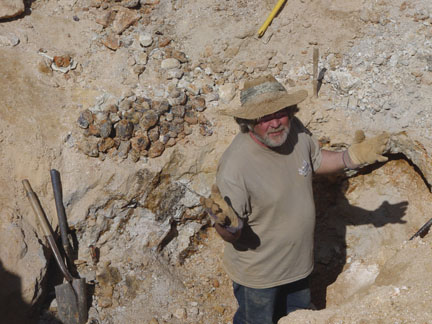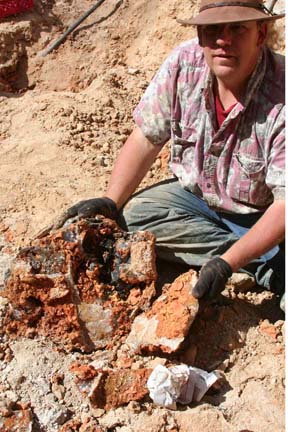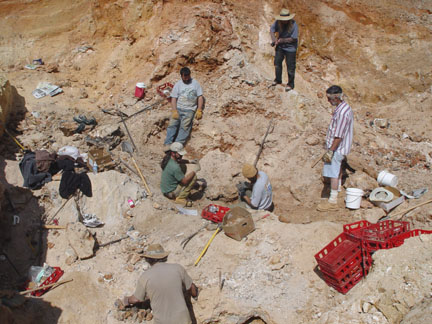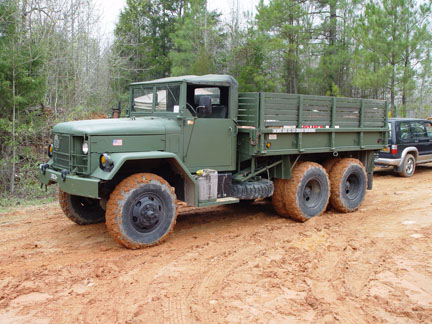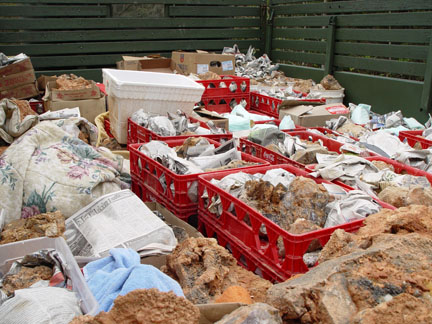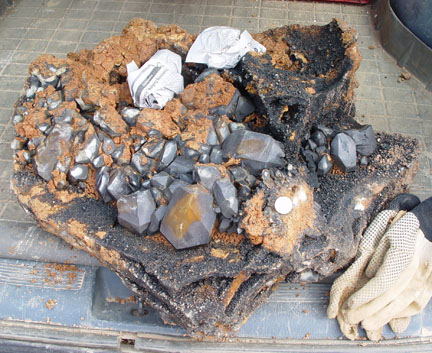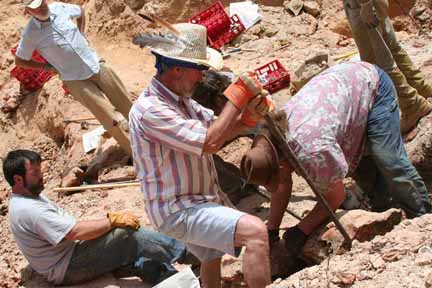Fieldtrip Report:
Diamond Hill Machine Dig!
Antreville, S.C.
April 2008Report by: Rick Jacquot
In early April 2008, Chet Karwoski and a team of diggers from the area conducted an eight day machine dig in Antreville S.C. at the famous Diamond Hill quartz mine. This site has been mined/prospected for close to sixty years and has produced some of the most unusual quartz specimens in the world. The actual mine area covers approximately three acres of land. There are three main pits at the Diamond Hill Mine. The Skeletal pit, the Amethyst pit and the Smoky pit. Throughout the years, large iron stained skeletal crystals have been found in abundance by local collectors. The next most commonly found crystal would be the smoky quartz crystals. Mostly pale and cloudy, these were never the high quality smokies found in other areas of South Carolina. The rarest crystal to be found was the amethyst crystal. Very few have been found of any quality and nice large crystals that were undamaged were almost unheard of. The first major discovery of high quality quartz at Diamond Hill took place in October of 2005. Chet and his crew were conducting a joint dig with the members of the MAGMA club. The club was working the Skeletal and Amethyst pits while Chet and his workers were in the Smoky pit. On the afternoon of the second day of the dig, Dave Smith spotted a large cluster of smoky crystal in a collapsed pocket at the bottom of the pit. The crystals were covered with a thick iron coating that was later removed to reveal the finest phantom smoky/amethyst crystals to ever come from the mine and maybe the state! This discovery was documented in my May, 2006 article in Rock & Gem magazine entitled "Phenomenal Phantom Quartz". Since that time much collecting has taken place at the mine, many unusual discoveries have been made including the occassional amethyst crystal or cluster, but nothing significant since 2005. That all changed in April.
The dig started routinely as Chunky the machine operator was directed by the diggers to what everyone hoped was a good location. The team was rewarded early on with the discovery of a huge vein and pockets of amethyst. Not the usual material that has been produced in the past, but very large crystals, some up to 6" in diameter, the largest crystals ever found at the mine. Not only were we finding crystals, but huge plates covered with 2-6" amethyst crystals. The plates range in size from a few pounds to hundreds and even one that weighs around 1,000 pounds!
